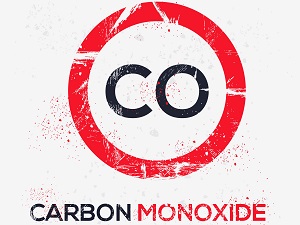During extremely cold weather or winter storms, staying warm and safe can be a challenge. Winter storms can bring cold temperatures, power failures, loss of communication services, and icy roads.
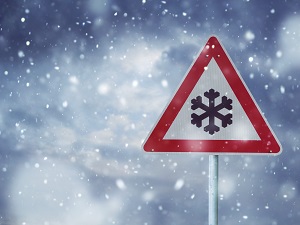
Winter storms can range from moderate snow over a few hours to a blizzard that lasts for several days. Heavy snow can immobilize a city requiring households to be on their own for a period of time and everyone should be prepared for the impact a winter storm may have on a community.
Winter storms are sometimes referred to as “deceptive killers” because most injuries, illnesses and deaths happen after the storm has passed or are only indirectly caused by the weather.
The dangers of winter storms include:
- Frostbite or hypothermia caused by prolonged exposure to the cold
- Traffic accidents due to low visibility or icy road conditions
- Heart attacks brought on by over-exertion while clearing snow
- Carbon monoxide poisoning from portable generators
- Slips and falls on icy walkways
If a winter storm is developing in an area near you, it is important to understand weather alerts that are issued by the National Weather Service (NWS).
- Winter Weather Advisory – When winter driving conditions begin to become difficult due to snow, ice and sleet.
- Winter Storm Watch – Heavy sleet or snow or even ice storms are possible. Everyone in the area should remain alert and be prepared.
- Winter Storm Warning – A major winter weather event is expected. Everyone should seek shelter and stay off the roads until the storm passes.
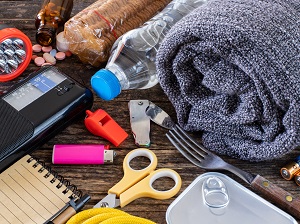
Pay attention to developing weather conditions, prepare yourself for cold winter weather, make sure your car is ready for winter travel, and weatherproof your home against the frigid temperatures.
Develop an emergency communication plan in case family members find themselves separated during a winter storm. Assemble supplies ahead of time that may be beneficial to have on hand during a winter storm. It’s important to plan ahead in case the power goes out. Include supplies such as:
- Flashlight, battery-operated radio and extra batteries
- First aid kit with one-week supply of prescription medicine
- Enough non-perishable food and water to last three days or more with a manual can opener
- Extra blankets and sleeping bags
Have safe emergency heating equipment available such as a fireplace with an ample supply of wood, or a small, well-vented, wood, coal or camp stove with fuel.
Insulate water pipes and allow faucets to drip during unusually cold weather to prevent pipes from bursting.
Install battery-operated carbon monoxide detectors and keep fire extinguishers on hand.
Winterize your vehicle and keep the gas tank full. Don’t forget to prepare an emergency supply kit for your car too.
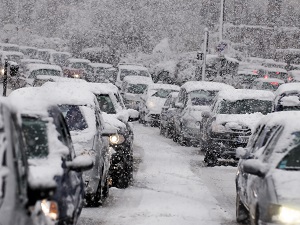
During a winter storm, especially if you have to go outside for any reason, it is important to dress warmly in loose-fitting, layered, light-weight clothing. Outer garments should be water repellant. Mittens are warmer than gloves because fingers generate warmth when they touch each other. Keep dry and remove wet clothing to prevent a loss of body heat. Protect your lungs from extremely cold air by covering your mouth when outdoors.
Driving is very dangerous during and immediately after a winter storm. Plan to stay off the road until the weather clears and the roads are safe. If driving is necessary, ensure you have emergency supplies of food, water, warm clothing, and a full tank of gas. If possible, travel during the day and do not travel alone.
People die every year from heart attacks that happen while they are shoveling snow because cold weather can put added strain on the heart. Use caution and take frequent breaks when shoveling snow. Lift lighter loads when shoveling snow or try pushing the snow instead of lifting it.
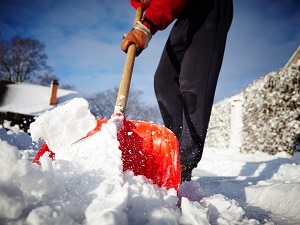
Because homes require extra heating during winter storms, it’s important to follow safety precautions to keep your family and your home safe from a winter fire.
Keep anything that can burn, including people, at least 3-feet away from heating equipment, like the furnace, fireplace, wood stove, or portable space heater. Never use your oven to heat your home. Make sure the fireplace has a sturdy screen to stop sparks from flying into the room. Fireplace ashes should be cool before putting them into a metal container, and the container should be kept a safe distance away from your home.
Be prepared in case the power goes out. Have flashlights and other battery-powered lighting easily accessible, along with extra batteries. Never use candles.
Be very careful if you plan to use portable electric space heaters. Always place the heater on a solid, flat surface that is out of the way of foot traffic. Plug the heater directly into the wall outlet. Never use an extension cord which can create a trip hazard. Ensure the space heater you are using has a thermostat, overheat protection, and an auto shut-off system that works in case it tips over. Turn portable heaters off when you leave the room and when you go to bed.
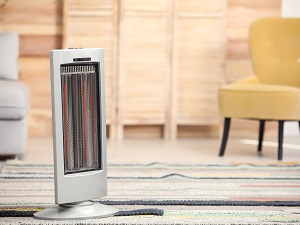
Winter storms can cause power outages that may last a few minutes, a few hours or even a few days. Many people have portable generators available to use to ensure they stay safe and warm at home in the event of a power outage, but portable generators also have their own unique risks. The primary hazards to avoid when using a generator are carbon monoxide (CO) poisoning from the toxic engine exhaust, electric shock or electrocution, and fire.
Generators should be used in well-ventilated outdoor areas with the generator exhaust system at least 5-feet from all doors, windows and vent openings to the house. Never use a generator in an attached garage, even with the door open. Turn off generators and let them cool down before refueling.
Never refuel a generator while it is hot. Gasoline spilled on hot engine parts could ignite. Store fuel for the generator in an approved safety can that is clearly labeled. Use the type of fuel recommended in the instructions or on the label on the generator.
To avoid electrocution, keep the generator dry and do not use in rain or wet conditions. Operate it on a dry surface under an open canopy-like structure, such as under a tarp held up on poles. Do not touch the generator with wet hands.
Carbon monoxide (CO) deaths are always highest during the winter months due to increased use of gas-powered furnaces and alternative heating, cooking, and power sources used improperly indoors during power outages. Never use a generator, grill, camp stove, or charcoal burning device indoors or in any partially enclosed area.
